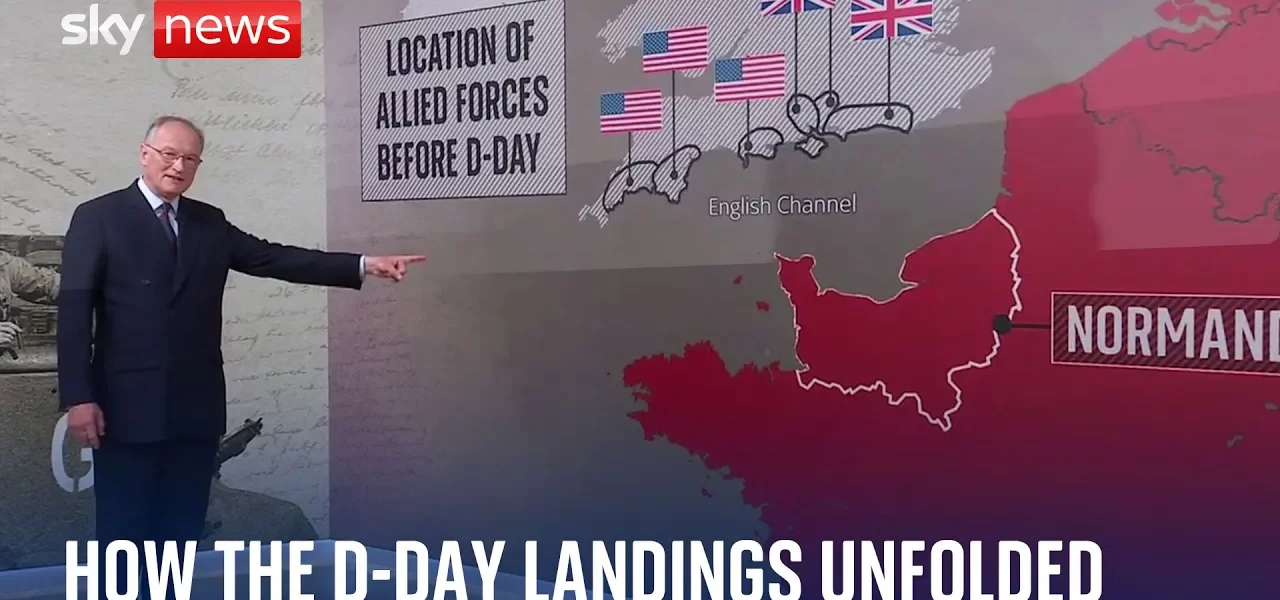D-Day: The Largest Amphibious Invasion of All Time

On June 6, 1944, D-Day marked a critical turning point in World War II as Allied forces launched Operation Overlord against Nazi-occupied France. This article delves into the intricacies of this monumental event, its planning, execution, and impact on the war.
Introduction
D-Day, the largest amphibious invasion in history, took place on June 6, 1944, and played a significant role in the liberation of Europe from Nazi occupation. Over 150,000 troops from the United Kingdom, the United States, and Canada participated in this historic operation, codenamed Operation Overlord. The aim was simple yet monumental: establish a foothold in Nazi territory to pave the way for the liberation of occupied Europe. This article will explore the complexities of the operation, the challenges faced by the troops, and the enduring legacy of D-Day.
Planning Operation Overlord
The planning for D-Day began months in advance, with meticulous attention to detail and coordination among various Allied forces. The invasion sought to breach the formidable Atlantic Wall, a series of fortifications built by Nazi Germany along the coast of occupied Europe.
Deception Campaigns
To ensure the success of the invasion, the Allies employed a variety of deception tactics:
- Operation Bodyguard: A comprehensive plan to mislead German intelligence.
- Dummy attacks: Simulated operations to distract German forces from the real target.
- Bombing raids: Conducted across northern France to divert attention and resources.
Troop Mobilization
As the invasion date approached, thousands of troops gathered along the south coast of England, awaiting the ideal conditions to launch the assault. The Allies were determined to execute a well-coordinated attack that would surprise the German military.
The Invasion Begins: Operation Neptune
On the night of June 6, Operation Neptune, the naval component of D-Day, commenced just after midnight. Allied naval vessels and aircraft played crucial roles in the initial stages of the invasion.
Airborne Assault
At around 1 AM, British and American planes dropped approximately 13,000 paratroopers behind enemy lines. These troops were tasked with seizing key strategic locations, ensuring that the beach landings could proceed with less resistance.
Challenges Faced by Paratroopers
However, the airborne assault was not without its challenges:
- Navigation issues led to many paratroopers landing off course.
- Heavy enemy fire resulted in significant casualties, with many soldiers killed or missing.
Landing on the Beaches
As dawn broke, attention turned to the beaches, where the main landings were to occur. The Allied forces faced formidable German defenses, yet they pressed on with remarkable bravery.
Beach Assignments
The invasion targeted five beachheads, each with its own challenges:
- Gold Beach: British troops faced stiff opposition but secured a foothold.
- Sword Beach: British forces encountered strong resistance but managed to establish control.
- Juno Beach: Canadian troops suffered heavy losses but advanced further than their counterparts.
- Omaha Beach: American forces faced relentless machine gun fire, resulting in significant casualties.
- Utah Beach: Despite poor weather conditions, troops landed with fewer casualties than at Omaha.
Casualties and Resistance
By the end of the day, the Allied forces had secured key areas along the coast, but at a heavy price:
- Approximately 3,500 American troops were killed or missing, with over 6,500 wounded.
- Canadian forces reported 335 dead and almost 1,000 injured.
- British casualties were not officially published, but estimates suggest around 3,000 were lost or wounded.
The Aftermath and Legacy of D-Day
In the months following D-Day, Allied forces continued to push inland, eventually liberating Paris within three months. The operation marked a significant turning point in World War II, leading to the eventual defeat of Nazi Germany.
International Contributions
While the primary forces involved were from the UK, US, and Canada, it is crucial to recognize the contributions of numerous other nations that played vital roles in the success of D-Day.
Conclusion
D-Day remains one of the most significant events in modern history, symbolizing courage, sacrifice, and the collaborative efforts of Allied nations. The successful landing on June 6, 1944, was not only a military triumph but also a step toward the liberation of Europe from tyranny. As we reflect on this monumental day, let us honor the brave men and women who fought valiantly, ensuring that their legacy endures. For more on World War II and its pivotal events, explore our related articles.
“`




